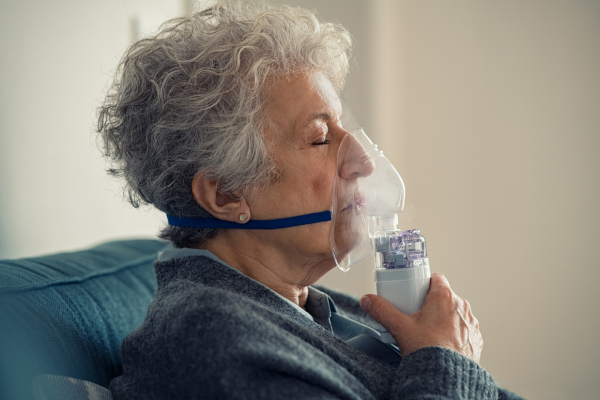Nebulizer

A Complete Guide to Breathing Relief
Breathing is something we often take for granted until it becomes difficult. For millions of people suffering from asthma, chronic bronchitis, COPD, or other respiratory illnesses, a nebulizer can be a game-changer.
This simple yet powerful device turns liquid medication into a fine mist that can be easily inhaled into the lungs. In this blog, we’ll cover everything you need to know about nebulizers, including how they work, their benefits, types, how to use them properly, and tips for maintaining them.
What is a Nebulizer?
A nebulizer is a medical device used to deliver medication directly into the lungs in the form of a mist or aerosol. It’s especially useful for people with respiratory conditions that make breathing difficult. Nebulizers are often prescribed by doctors for:
-
Asthma
-
Chronic Obstructive Pulmonary Disease (COPD)
-
Bronchitis
-
Pneumonia
-
Cystic Fibrosis
-
Allergic lung conditions
-
Post-COVID recovery therapy
The device is effective for both children and adults, making it an essential tool in many households.
How Does a Nebulizer Work?
Nebulizers work by converting liquid medicine into a breathable mist using compressed air or ultrasonic power. The patient inhales the mist through a mouthpiece or mask, allowing the medication to reach deep into the lungs quickly and efficiently.
The process typically takes 5 to 15 minutes, depending on the medication and the type of nebulizer used.
Types of Nebulizers
There are several types of nebulizers, and each offers unique benefits:
1. Jet Nebulizers
-
Use compressed air to turn medication into mist
-
Durable and commonly used
-
Economical and widely available
-
Slightly noisy during use
2. Ultrasonic Nebulizers
-
Use high-frequency vibrations to produce mist
-
Quieter and faster than jet nebulizers
-
Ideal for children and noise-sensitive users
-
Slightly more expensive
3. Mesh Nebulizers
-
Use a vibrating mesh to create mist
-
Extremely quiet and portable
-
Battery-powered, great for travel
-
Higher cost but highly efficient
Why Use a Nebulizer?
Nebulizers are often preferred for people who have difficulty using inhalers or require higher doses of medication. Some key advantages include:
-
✅ Direct delivery to lungs for fast relief
-
✅ Easy to use for children, elderly, and those with severe illness
-
✅ Less coordination needed than with inhalers
-
✅ Can administer a variety of medications, including bronchodilators, corticosteroids, and antibiotics
-
✅ Helpful during acute attacks and long-term treatment
When Should You Use a Nebulizer?
Nebulizers are recommended when:
-
You or your child struggle with inhalers
-
The medication requires long, steady inhalation
-
You need high doses during severe flare-ups
-
The doctor prescribes it for specific respiratory conditions
Always consult your physician before using or changing any respiratory medication or device.
How to Use a Nebulizer – Step-by-Step
-
Wash your hands thoroughly.
-
Assemble the nebulizer. Connect the air compressor, tubing, medication cup, and mouthpiece/mask.
-
Add the prescribed medication to the cup using a sterile dropper or ampoule.
-
Sit in an upright position. This helps the medication reach deep into the lungs.
-
Turn on the machine and inhale the mist slowly and deeply through your mouth.
-
Continue until all medication is used, typically around 10 minutes.
-
Clean and disinfect the nebulizer parts after every use to avoid infections.
Maintenance and Cleaning Tips
To ensure effectiveness and hygiene:
-
Clean the medication cup and mouthpiece with warm water after each use.
-
Disinfect once a week using a vinegar solution (1 part vinegar to 3 parts water).
-
Let all parts air-dry on a clean towel.
-
Replace tubing and filters as recommended by the manufacturer.
-
Store in a clean, dry place away from dust and sunlight.
Common Mistakes to Avoid
-
❌ Not cleaning the nebulizer regularly
-
❌ Skipping doses or incorrect medication measurement
-
❌ Using expired medication
-
❌ Incorrect assembly or damaged parts
-
❌ Storing it in damp or dusty areas
Avoiding these mistakes can greatly improve treatment outcomes and device longevity.
Portable vs. Home Nebulizers: What Should You Choose?
Home Nebulizers
-
More powerful
-
Great for regular or long sessions
-
Requires electricity
Portable Nebulizers
-
Compact and battery-powered
-
Ideal for travel or emergencies
-
Slightly higher cost but very convenient
If you’re often on the move or need flexibility, a portable nebulizer is a smart investment.
Final Thoughts
A nebulizer isn’t just a machine—it’s a lifeline for people dealing with chronic or acute respiratory problems. It offers safe, fast, and efficient medication delivery and empowers patients to manage their breathing conditions from the comfort of their homes.
Whether you’re caring for a child with asthma, managing COPD, or recovering from post-viral complications, a nebulizer can significantly enhance your quality of life.
🛒 Looking to buy a reliable nebulizer?
Explore our medically approved range of UBINAS nebulizers – designed for comfort, safety, and effective relief.

